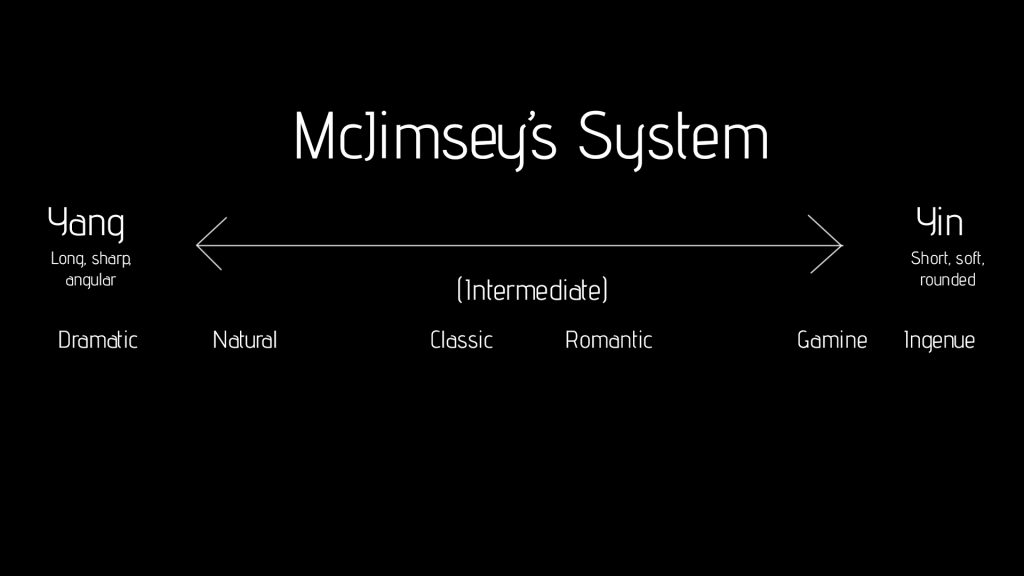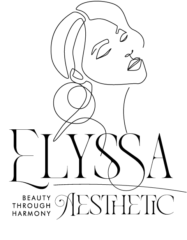Yin/Yang - The Approach To Styling That Will Change Your Life
I know, this is a bold statement……a life changing approach to personal style?? YES, it’s true! Well, it was life changing for me at least. But I truly believe that this method can work for anyone.
What led me to this point? Before I stumbled upon this approach I struggled to figure out what looked good on me. Call me completely clueless (was…..I’m not anymore, ok!? LOL) but I seriously thought that if I just put on the same clothes as the model, the outfit would totally look the same on me. I’d just need to maybe bring up the hem because I’m only 5 feet tall, right? Nope, WRONG……guess again. Ok, maybe I just need to shop at the more expensive retailers and buy from them instead. Surly it was a quality issue, right? Nope, I still looked like I had no clue how to dress myself.
So what was the issue? Well the issue was that I was not considering my overall body composition. I was trying to wear clothes that fought against my natural silhouette, lines and shapes. And the worst part is that I blamed myself. I genuinely thought that there was something wrong with me.
Ok, so enough about my struggles……I can elaborate on my style journey in a different post….I’m here to tell you about the Yin/Yang Styling Method and how to make a beginning to curating a wardrobe that you’ll love and 100% feel yourself in. So here we go!
First we need to get a better understanding of the basic principles of the methodology, which is what I’ll be covering in this blog post.
So first let’s establish what Yin and Yang are perceived as in this methodology. Yin and Yang (in terms of this styling method) are two extreme opposites which represent physical attributes as well as non-physical attributes (essence). The idea is to evaluate yourself and see where you can identify yin and yang. So let’s take a look at how these extremes are defined according to this methodology.
Physical Yang: Long vertical line, angular, broad, sturdy, straight and striking features.
Physical Yin: Petite, dainty, delicate and small circular shapes/features.
Essence Yang: Strong, fierce, reserved, quiet, formal, grounded, decisive, regal, mysterious and sophisticated.
Essence Yin: Charming, radiant, sweet, receptive, demure, shy and magnetic.
So the idea is to discover where you can identify Yin/Yang physically and essentially (and to what degree). Now, because everyone is so unique, obviously some of us will have a hard time identifying with some of these absolutes. The good news is that these two extremes reside on a spectrum so there’s room for all! But before we take a more in-depth look at the spectrum, we need to give a little credit where credit is due and pay homage to those who carved the path to this methodology.
Click here to view my YouTube video which offers more information on Yin and Yang attributes.
Giving credit where credit is due
So, the idea of applying the concept of Yin and Yang, as a means to developing a harmonious personal style, was first brought to light by a woman named Belle Northrup (respectively I call her mamma Belle).
Back in 1936 Northrup contributed to the publishing of Education Today which was “An Annual Devoted to the Problems of Art Education”. This was an annual publication which was sponsored by the members of the Fine Arts Staff of Teachers College at Columbia University. She wrote a 10 page article titled Approach to the Problem of Costume and Personality. (FYI….”costume” was a term used back then for outfit, basically). She aimed to addressed the problem of an outfit looking “off”, unfitting or separate from the individual and argued that a person’s “emotional” and physical traits should be sensed as a whole and therefore represented in their ensemble.
Now, in order to help achieve this, she proposed that we adopt a “universal language”. She goes on to suggest we use terms that can explain complex meanings which are typically “felt” rather than clearly understood. And thus was born the idea of applying the ancient principles of Yin and Yang and how they relate to the individual and the head-to-toe elements of an ensemble (garments, hair, makeup and accessories).
Her article goes on to clearly point out where we can see yin and yang within nature, man-made structures, art and historical figures. She then showcases two women who are prime examples of Yin and Yang and clearly outlines the attributes of Yin and Yang in reference to personality and appearance.
She leaves us with this “Within each woman, as in art and nature, there is an intermingling, in some degree, of Yin and Yang. The subtlety of her Yin-Yang personality pattern makes each woman an individual, fascinating study…….our intention is to see clearly their possibilities and limitations of personality-appearance with a view to dressing them accordingly.”
Belle never elaborated any more on this (to my knowledge) BUT a woman by the name of Harriet McJimsey gladly picked up the torch and ran with it!
McJimsey published a book in 1963 titled Art in Clothing selection which proceeded to elaborate on this method to personal styling. She offered an expanded look at the spectrum of Yin and Yang with the creation of 6 body and style archetypes – Dramatic, Natural, Classic, Romantic, Gamin and Ingenue.
Click here to view my YouTube video which offers a complete breakdown of the history of this methodology
The Spectrum
Now that we have a little more background on where this methodology originated, let’s take a look at the 6 archetypes and yin/yang spectrum that McJimsey set forth. She elaborates on Northrop’s proposed methodology which made it that much easier for the average woman to understand and apply. Now, as time went on, stylists around the world took inspiration from McJimsey’s archetypes. And as a result, in other “systems” you might see the archetypes rearranged on the spectrum or in some cases they are completely discarded, but I personally feel that McJimsey’s spectrum and approach are logical, intuitive and very effective.
So let’s take a closer look at McJimsey’s spectrum of the 6 archetypes. Like I said earlier, we’re all so unique that there’s no way we would all be able to identify/see just pure yang or just pure yin in our physical and essence traits . This might be the case for some, but it leaves the rest of us feeling a little confused and lost. So, McJimsey outlines 6 possible archetypes as the standard for comparison and encourages women to look at these as “adjectives” or “modifiers” (or in my words……a springboard!) instead of “absolute nouns”.
A Simplified Description of Each Archetype (Physical)
Dramatic (Yang): Long vertical line, angular frame, appears mature/dignified
Natural (Casual Yang): Bone structure is larger/blunted, width at shoulders, soft rectangular shapes, appears casual
Classic (Balanced): Balanced, proportionate, blended, moderate vertical line, appears
Romantic: Rounded figure, medium to smaller frame
Gamin: small in stature, compact, appears youthful
Ingenue: Petite, delicate bone structure, small circular lines, appears youthful

Note: Each of the main types can also lean a little more Yang or a little more Yin. For image examples and a full breakdown click here.
Applying the Methodology
Once you’ve identified your yin/yang balance you can begin to understand what will naturally harmonize with you. The basis of this approach is to compliment your yin/yang balance with an overall look that matches an equal harmony. You can almost think of it as mimicking your natural yin/yang attributes (unlike the “fruit system” which primarily focuses on hiding parts of your body or encourages women to think of the hourglass figure as superior………but this is a whole other blog post! LOL). Below are some very simplified examples for each of the 6 main archetypes.
Dramatic (Yang): Monochromatic looks, high fashion/avant-garde, sharp lines, tailored, rich fabrics, bold contrast, geometric shapes, long silhouette
Natural (Casual Yang): casual, unconstructed silhouettes, grounded/airy, natural finishes, softly rounded geometric shapes, comfort, generally informal
Classic (Balanced): clean tailored lines, simple designs and shapes, smooth silhouette, refined, high quality
Romantic: waist emphasis, glam, circular sweeping lines and shapes, hourglass silhouette, light and luxurious fabrics
Gamin: small scale casual, animation, rigid small shapes, broken/staccato silhouette, crisp tailoring, tiny details
Ingenue: sparkling, small circular shapes (rococo), petite rounded silhouette, weightless, upward movements, soft and delicate
Now I hold steady to the idea that you can be a combination (or as McJimsey’s calls it “a composite”) of two or more of these archetypes. I also believe that you can strongly identify with one archetype and have nuances of yin or yang that will ultimately have influence on the appearance of your overall balance. This is the brilliance of this system! When we view body composition, essence and garment elements through the lens of yin and yang it gives us the ability to see where we can add balance and produce harmony.

